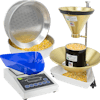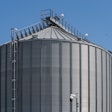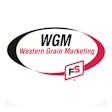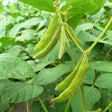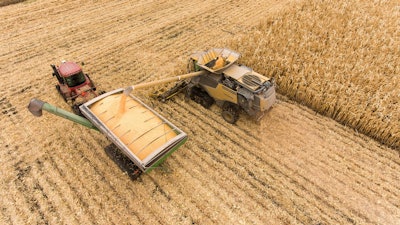
Farm supply cooperatives and independent ag retailers are enjoying strong financial returns as the upturn in U.S. grain prices enters its second consecutive year.
The extended period of above-average crop prices is leading farmers to increase spending on agronomic inputs and services. However, while profits for the ag retail sector are expected to remain favorable over the next 12 months, emerging structural challenges will bring increased competition and pressure profitability in the years to come.
Major crop input suppliers wielding greater market power, larger farm enterprises with a growing appetite for more sophisticated technologies, and competition from ag equipment dealers competing for those services are among the key challenges facing ag retailers over the long-term.
According to anew report from CoBank’s Knowledge Exchange, the ag retailer of the future has an opportunity to earn more income from precision agronomy services and emerging sustainability management programs, in addition to traditional crop input sales.
The report suggests the current operating environment provides a timely opportunity for ag retailers to invest in new technologies and position themselves for success in a marketplace that is evolving rapidly.
“农场的传统方法与供应ives is to save above-average profits when times are good and then manage costs rigorously during the inevitable downturn, which we expect will begin in 2023,” says Kenneth Scott Zuckerberg, lead grain and farm supply economist with CoBank.
“Unfortunately, this approach exposes cooperatives to revenue volatility and declining earnings during down cycles, which can often last five or more years.”
Instead of relying on product commissions and rebates alone, Zuckerberg sees farm supply cooperatives’ path forward is to expand their precision agronomy service offerings and capture more income from consultative service and software fees.
“Putting technology and information to work to help farmers manage their inputs and production is where farm supply co-ops excel,” he said.
Tailwinds continue for ag retail, near term
Ag retailers have enjoyed three consecutive profitable agronomy seasons and are generally well positioned for fall 2021 given high grain prices and favorable farm economics.
The short-term outlook remains generally positive based on strong farmer income, steady demand for crop inputs and favorable cash flows.
Partially offsetting this, retailers may face shortages of certain protection chemicals sourced from Asia as well as high wholesale fertilizer costs which they may not be able to fully pass on to growers.
Growing global demand for feed grains and vegetable oil generally positions U.S. farmers and retailers for continued success in 2022.
U.S. corn and soybean stocks remain very tight and the demand imbalance in stocks and usage should persist until at least 2023.
Forces driving change
Over the next several years, ag retailers are facing risks that will accelerate over time.
The number of U.S. farms continues to decline due to consolidation as family and non-family farms seek greater economies of scale to boost profitability.
As the new class of commercial farming enterprises hire their own agronomy staff and demand more data-intensive precision ag services, ag retailers could lose their edge as agronomic service providers.
Recent acquisition activity confirms that ag equipment manufacturers are accelerating their offerings of autonomous and precision farming services, which compete with traditional agronomic advice provided by ag retailers.
Consolidation among agro-chemical and seed suppliers and the maturation of disruptive ag tech startups represent additional structural obstacles.
Getting paid properly for advice
Beyond providing farm customers with enhanced tools to farm more profitably, the business case for ag retailers’ expansion of precision agronomy services is financially compelling.
Precision capabilities can help cooperatives attract and retain high value customers, while recurring service fees provide a new source of income. From a risk-reward standpoint, Zuckerberg sees revenue-sharing partnerships with proven technology service providers as a solid opportunity for ag retailers.
“The current environment is ideal for partnership structures as a revenue-sharing opportunity between retailers and suppliers,” he said. “The opportunities associated with technologies for everything from drone imagery and remote sensing for crop scouting to precision seed recommendations and prescriptions are continually expanding.”
Read the report,Precision Agronomy Services Will Factor Heavily in the Future of Ag Retailing.
About CoBank
CoBank is a $158 billion cooperative bank serving vital industries across rural America. The bank provides loans, leases, export financing and other financial services to agribusinesses and rural power, water and communications providers in all 50 states.




